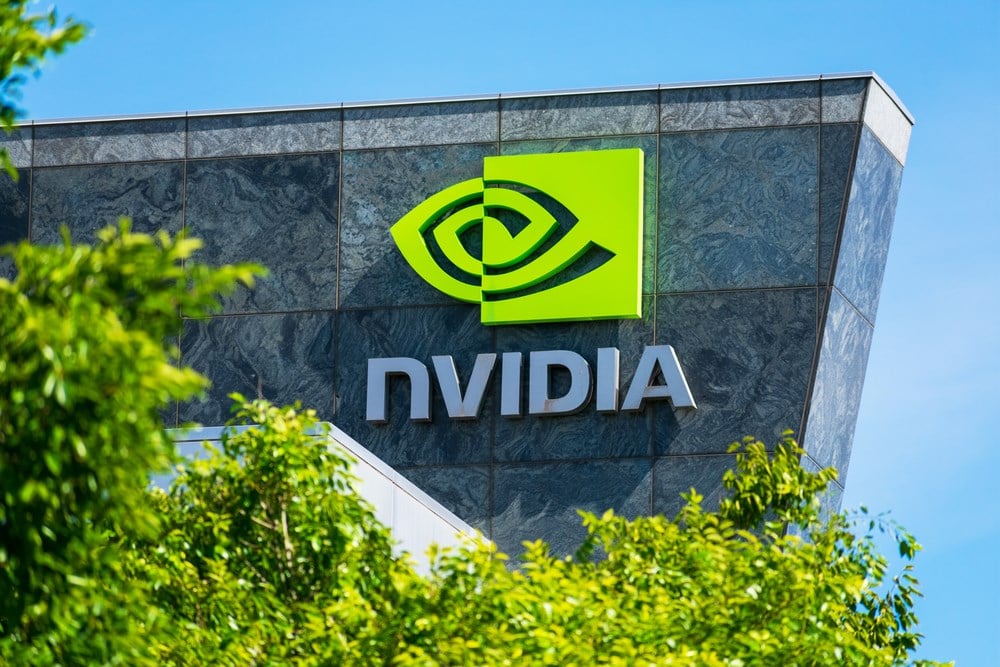
S&P’s 2023 hero, chip designer Nvidia Corp. (NASDAQ: NVDA) is in the buy range after clearing a double-bottom base above $476.09. Shares closed at $494.80, up 3.9% from its buy point.
Nvidia stock is up 21.33% in November after posting declines in September and October.
Nvidia has benefited from the market's fixation on AI more than any other stock, at least judging by year-to-date return. The stock is up 234.53% this year.
That makes it the biggest gainer within the SPDR S&P 500 ETF Trust (NYSEARCA: SPY). Of course, that also means it's the leader among tech stocks in the S&P 500, as tracked by the Technology Select Sector SPDR Fund (NYSEARCA: XLK).
It's also the leader among artificial intelligence stocks as a group.
Use caution ahead of earnings report
A glance at the Nvidia chart shows the stock breaking out of the base on November 9 in heavy trading volume, which has since subsided.
While the breakout is encouraging, investors should recognize one big caveat: The company reports third-quarter results on November 3. As always, an earnings report could catalyze a sharp move either up or down.
Nvidia got its start in the business of PC graphics chips, later expanding to other applications, including gaming, scientific modeling, data science, autonomous vehicles, robotics, 3D internet functions and AI.
In the market for AI chips, Nvidia lists its competitors as Advanced Micro Devices Inc. (NASDAQ: AMD) and Intel Corp. (NASDAQ: INTC).
Nvidia's AI chip customers include Amazon.com Inc. (NASDAQ: AMZN), Microsoft Corp. (NASDAQ: MSFT), Alphabet Inc. (NASDAQ: GOOGL), Meta Platforms Inc. (NASDAQ: META) and Dell Technologies Inc. (NYSE: DELL).
Rolling out improvements to its chips
While rivals and some customers scurry to develop their own AI chips, Nvidia continues improving its product offerings.
On November 13, the company unveiled its H200 Tensor Core GPU. The new chip features 141 gigabytes of memory and can improve performance between 60% to 90% over the current H100 chips, in certain generative AI applications.
The company expects the new chips to be available in the second quarter of 2024.
It added that Amazon Web Services, Google Cloud, Microsoft Azure and Oracle Corp. (NYSE: ORCL) Cloud Infrastructure will be among the first providers to deploy H200-based technologies.
Microsoft now developing its own AI chips
But the technology world thrives on fast-paced innovation, and Nvidia is not immune to competitive threats.
For example, Microsoft recently said it would use its chips instead of Nvidia’s in some AI applications. On November 16, Microsoft announced its new Azure Maia AI Accelerator, optimized for AI tasks and generative AI.
The company said the new chips will roll out to Microsoft’s data centers early next year, initially powering services such as Microsoft Copilot or Azure OpenAI Service.
Currently, those tasks are performed at least in part by Nvidia chips.
Analysts eyeing triple-digit EPS growth
Analysts now see Nvidia earning $9.90 per share in fiscal 2024, the current fiscal year. That would be an increase of 196% over fiscal 2023. In fiscal 2025, analysts expect Nvidia to earn $15.77 per share, up 59%.
You can use MarketBeat's Nvidia earnings data to track the fast pace of growth. In fiscal 2021, revenue totaled $16.68 billion. That rose to $26.914 billion in 2022 and $26.97 billion in 2023. The essentially flat pace of revenue growth in 2023 was due to soft demand for gaming chips.
Analysts' revenue forecasts for Nvidia are about $41 billion this fiscal year, which tracks with the triple-digit earnings forecast.
"Big Short" investor sours on semiconductors
However, despite the potential, investors would be wise not to get too giddy about Nvidia or any stock.
The chart tells us that institutional investors have confidence in the stock, but "Big Short" investor Michael Burry reportedly takes a bearish view of the chip sector.
According to the latest regulatory filings, Burry's Scion Asset Management uses put options to bet against the iShares Semiconductor ETF (NYSEARCA: SOXX), whose third-largest component is Nvidia.
While chipmakers have warned of weakness in the automotive and industrial sectors, there have yet to be warnings about a slowdown in demand for AI chips.
However, companies including Cisco Systems Inc. (NASDAQ: CSCO) and Palo Alto Networks Inc. (NASDAQ: PANW) have warned about slowing customer demand, so enterprise customers could also slash spending on AI if some belt-tightening becomes necessary.
